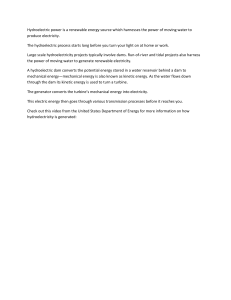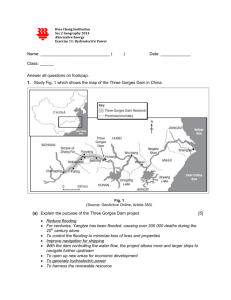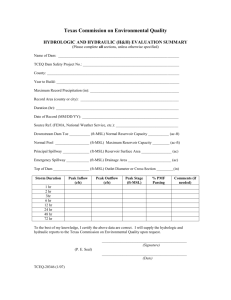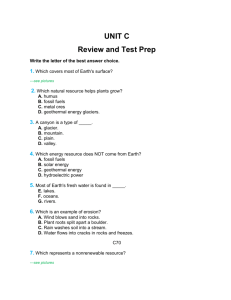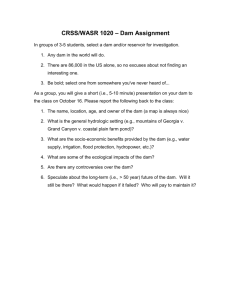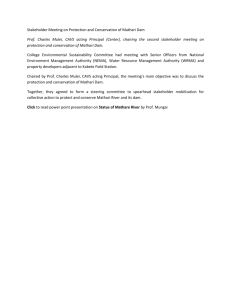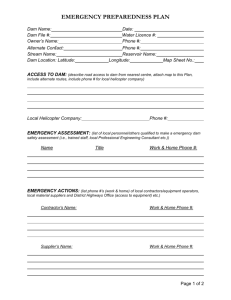hydroelectricpower
advertisement
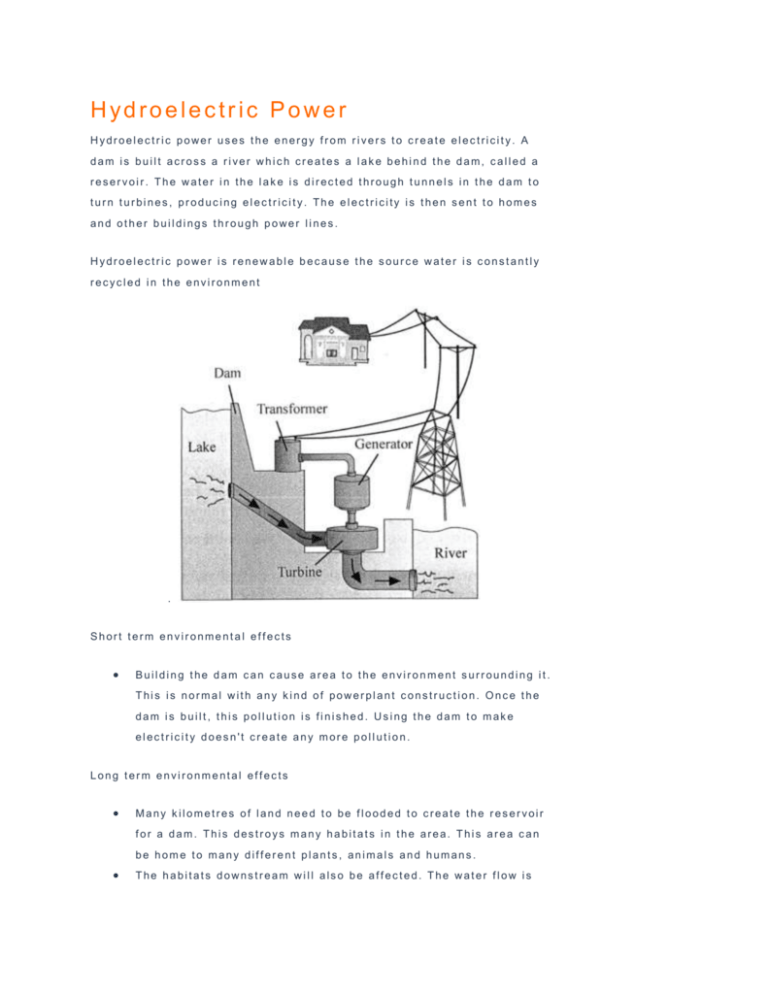
Hydroelectric Power Hydroelectric power uses the energy from rivers to create electricity. A dam is built across a river which creates a lake behind the dam, called a reservoir. The water in the lake is directed through tunnels in the dam to turn turbines, producing electricity. The electricity is then sent to homes and other buildings through power lines. Hydroelectric power is renewable because the source water is constantly recycled in the environment . Short term environmental effects Building the dam can cause area to the environment surrounding it. This is normal with any kind of powerplant construction. Once the dam is built, this pollution is finished. Using the dam to make electricity doesn't create any more pollution. Long term environmental effects Many kilometres of land need to be flooded to create the reservoir for a dam. This destroys many habitats in the area. This area can be home to many different plants, animals and humans. The habitats downstream will also be affected. The water flow is reduced when the dam is put in place. Animals and plants that rely on the river will be forced to find other water sources. Fish that travel the river in the past to reach spawning grounds many be unable to lay their eggs. This can mean smaller numbers of fish in the future.
